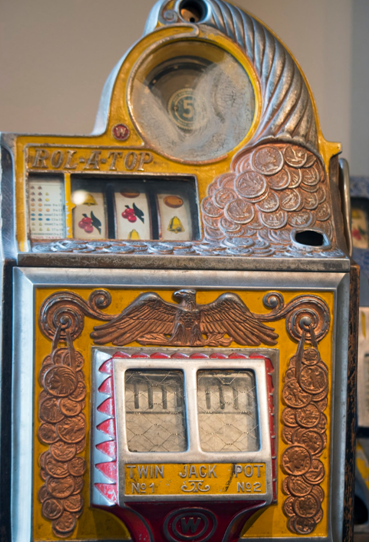For over a century, slot machines have been a fixture of casinos around the world. Originally a mechanical device that relied on levers and gears to operate, the modern slot machine is now a digital marvel that uses complex algorithms to determine the outcome of each spin. But how did we get from the early days of the “one-armed bandit” to the high-tech machines we see today?
The first slot machine was invented in the late 1800s by a man named Charles Fey. This early machine had three reels and five symbols – horseshoes, diamonds, spades, hearts, and a liberty bell – which gave it the nickname “the Liberty Bell machine“. Players would insert a nickel and pull the lever to spin the reels. If the symbols lined up in a certain way, the player would win a prize.

Over the next few decades, slot machines evolved and became more popular. They were eventually banned in many states in the US in the early 1900s due to concerns about gambling, but they remained a fixture of casinos in Nevada and other gambling-friendly states. In the 1960s, electronic slot machines were introduced, which used electronic circuits instead of mechanical parts to determine the outcome of each spin. This paved the way for the modern digital slot machines we see today.

One of the key innovations that have driven the evolution of slot machines is the use of random number generators (RNGs). These computer programs use complex algorithms to generate a sequence of random numbers, which are used to determine the outcome of each spin. This allows for a completely unpredictable and exciting gaming experience, as players never know what the next spin will bring.
Another innovation that has become increasingly common in modern slot machines is the use of free spin bonuses. These bonuses are designed to entice players to keep playing, and they work by offering a certain number of free spins to the player. During these free spins, the player has a chance to win additional prizes without having to risk any more money.
Free slot spins have become a popular marketing tool for online casinos, which use them to attract new players and keep existing ones engaged. They are also used in mobile gaming apps and other digital products to provide a fun and engaging experience for users.
But it’s not just the technology behind slot machines that have evolved – the design and aesthetics of the machines have also changed over time. Early slot machines were often ornate and decorative, with intricate designs and carvings. Modern machines, on the other hand, are often sleek and minimalist, with simple graphics and bright colors that pop on digital screens. The evolution of slot machines from mechanical devices to digital marvels has been driven by a combination of technological innovation and creative design. While the basic concept of the slot machine has remained the same – spin the reels and hope for a winning combination – the introduction of random number generators and free spin bonuses has made the gaming experience more exciting and unpredictable than ever before. As technology continues to evolve, it’s likely that we’ll see even more innovations in the world of slot machines and other gaming devices.




